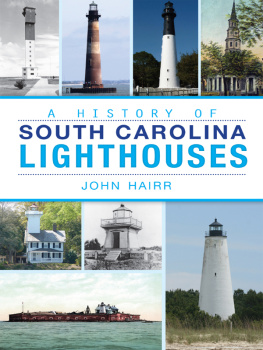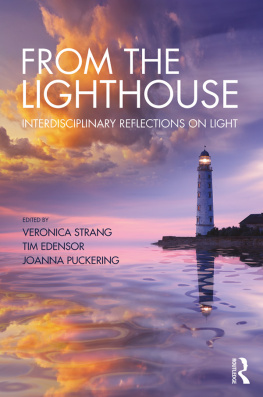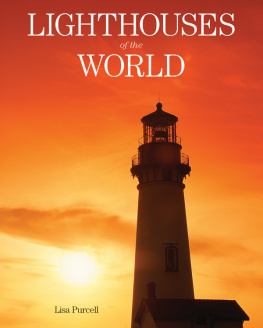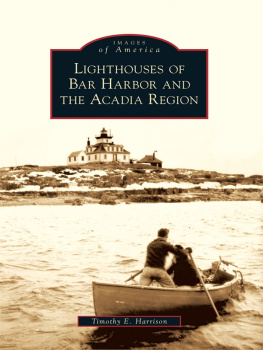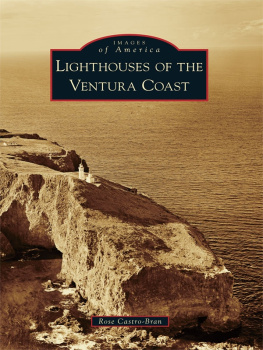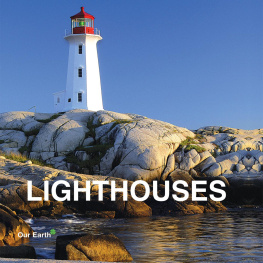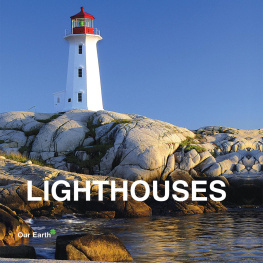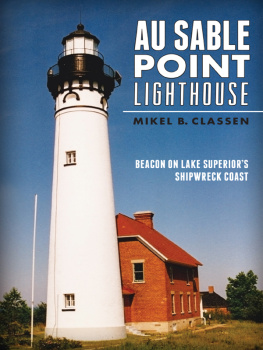

Published by The History Press
Charleston, SC
www.historypress.net
Copyright 2015 by Rose Castro-Bran
All rights reserved
First published 2015
e-book edition 2015
ISBN 978.1.43965.373.9
Library of Congress control number: 2015958836
print edition ISBN 978.1.60949.619.7
Notice: The information in this book is true and complete to the best of our knowledge. It is offered without guarantee on the part of the author or The History Press. The author and The History Press disclaim all liability in connection with the use of this book.
All rights reserved. No part of this book may be reproduced or transmitted in any form whatsoever without prior written permission from the publisher except in the case of brief quotations embodied in critical articles and reviews.
CONTENTS
ACKNOWLEDGEMENTS
This book was only made possible with the generosity and assistance of the following individuals and groups. I would like to thank Tom Budar of the Point Fermin Lighthouse Society and the Cabrillo Beach Boosters; Dennis Drag, PhD, of the Long Beach Lions Club; Paul Mandeville of the Long Beach Lions Club; Charles Johnson of the Ventura County Museum of History and Art; Dr. David Rosen, U.S. Coast Guard historian; Jeff and Richard Gales of the U.S. Lighthouse Society; Joanna Bard Newton; Anne Hansford and Joe McKenzie of the San Pedro Bay Historical Society; the late Dorothy Ramirez and Helen Brant of the Hueneme Historical Society; Long Beach Library Historical Archives; Merrill McCauley of the National Park Service; Joel Anderson of the Anderson Design Group, Inc.; and John M. Ambicki Jr.
In grateful appreciation to the members of the United States Coast Guard Aids to Navigation Team Los Angeles/Long Beach.
Special thanks to the children and descendants of lighthouse keepers for sharing their stories and their lives: Linda Cherney, Jerry Boylan, Heather Reed, Margaret Kellogg-Anderson, Martha McKenzie and to the late Laverne White-Dornberger (for ten years of being my pen pal).
Special acknowledgement and thanks to Eric Castro-Bran, my father inlaw, fellow auxiliarist and keeper of the Point Vicente Lighthouse for over twenty years, for his encouragement, support and resources.
Thank you to my husband, Kim, for your endless help and support and for being my light.
INTRODUCTION
The Greater Los Angeles Area encompasses five counties in Southern California, including Los Angeles, Orange County, San Bernardino, Riverside and Ventura. Dotting the coastlines is a handful of lighthouses ranging from intrinsically ornate to starkly modern. Similar to the diversity that Los Angeles is known for, each lighthouse represents a different period in history, an altering demand for change and modernization, as well as the progression of technology and optics. The history of lighthouse progress throughout Los Angeles, in some cases, applauds preservation and restoration and, in other cases, surrenders to the advancements of its time. Each lighthouse is a time capsule of the era in which it was constructed, and each fulfilled or continues to fulfill its primary purpose of guiding vessels through safe passage.

Authors sketch.
Lighthouses of Greater Los Angeles illustrates the story of six federal aids to navigation, beginning with two lighthouses that were both illuminated on the same day, Point Fermin and Point Hueneme Lighthouses, followed by Los Angeles Harbor Lighthouse (Angels Gate), Point Vicente Lighthouse, Anacapa Island Light Station and Long Beach Light, as well as the U.S. Coast Guard. A community effort, Lions Lighthouse for Sight in Long Beach, a private aid to navigation, is depicted as well.
Chapter 1
POINT FERMIN LIGHTHOUSE
EARLY YEARS
The Tongva/Gabrielino were the first people to inhabit the Los Angeles Basin. According to a Tongva/Gabrielino elder, We each had our communities, but we were all neighbors and there were no boundaries. We would go to each others places to gather and to trade. Though they had an ancient respect and understanding that we are of the land, land claims and acquisitions would soon supersede this noble understanding. As the first people, they were given the name Gabrielino by the Spanish, and it has remained. The Gabrielino were avid hunters and gatherers and thrived in a coastal region that was rich in natural resources and endless sunshine. They inhabited vast areas of the Los Angeles Basin for several thousand years dating back to around 6000 BC.
It was fifty years after Christopher Columbus, in the year 1542, that Juan Rodriguez Cabrillo set out for exploration and landed in America. Sailing north from Mexico into unknown waters, Cabrillo was on a journey to acquire land for the King of Spain.
On October 8, 1542, the hillsides of what was to be Rancho San Pedro were under heavy dark plumes of smoke. Chaparral, which consisted of tangled shrubs and bushes, created a dense and attractive habitat for the California grizzly bear, so clearing the area by burning the chaparral was a periodic necessity, and as a result, dark plumes could be seen for miles out to sea. Juan Rodriguez Cabrillo witnessed the billowing smoke and, from this, named the bay Baha de los Fumos or Bay of Smokes, a title that was held for over fifty years.

A statue of Juan Cabrillo on display at Cabrillo Beach, San Pedro, California. Courtesy San Pedro Bay Historical Society.
Upon arriving on the shores of San Pedro, Cabrillo was greeted by the Tongvas. Cabrillos ambitions were extensive as he was seeking to discover a route to Asia and the Spice Islands; search the area from the Pacific Ocean to the Atlantic, known as the mythical Strait of Anian; chart the coast; and, like most explorers, discover gold. Of these ambitions, Cabrillo was successful in claiming over eight hundred miles of coastline for Spain. Cabrillo is given credit, based in part on his voyage, for a west-to-east Pacific crossing some twenty years later. Once the worlds continents were connecting, the Spanish age of exploration would give way yet again, this time to the colonial era.
Sebastian Viscaino sailed into the bay on November 26, 1602a day he believed was in celebration of Saint Andrewand changed the name to Ensenada de San Andrs or Bay of Saint Andrew. It was, however, in 1734, that Cabrera Bueno, a famed navigator and cosmologist, discovered that the day Viscaino arrived was actually on the feast day of Saint Peter, not Saint Andrew. Once again, the bay was renamedthis time for the martyred Saint Peter, translated as San Pedro.
Since Saint Peter was also bishop of Alexandria, Egypt, the same location that the first lighthouse was reported to be established by the pharaohs in 280 BC, the name was serendipitous, as in due time, San Pedro would also have its own lighthouse, and the bay of San Pedro would be illuminated againthis time not from burning bushes but from a lighted beacon.
The prominent point, which sits at the tip of the Palos Verdes Peninsula, was given the name Point Fermin by Captain George Vancouver in recognition of Father Fermn de Francisco Lasun de Arasqueta, who served as father and president of the California missions.
Next page




